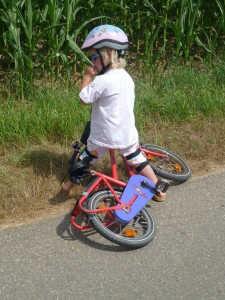I don’t recall much about learning how to ride a bicycle. I remember the training wheels and taking a few nasty falls. I do know that my father wasn’t there to help me or witness it. He was a small town family doctor who routinely worked over a hundred hours a week. Maybe it’s one of the reasons I don’t have much of a memory of the experience?

Associations
Riding a bike does represent a new level of freedom similar to learning to walk and drive. For most of us it becomes connected with an innumerable number of life experiences – both positive and unpleasant. Regardless of my thoughts about wanting or not wanting to ride a bike, the skill is a permanently embedded set of neurological circuits.
You can’t unlearn how to ride a bicycle. In fact, you can’t eliminate any of the past experiences from your brain. They just become more difficult to pull up over time. The past can be triggered by a word, comment, or image. Pain is a more intense set of pathways that become tightly connected to your life experiences. The current definition of chronic pain is “…….. it is an embedded memory that becomes associated with more and more life experiences and the memory can’t be erased.” (1)
Reprogram
So you are stuck with deeply ingrained pain patterns and the more attention you pay to them by trying to fix them just reinforces them. It is a miserable state of affairs. What are you going to do?
The key is utilizing the brain’s capacity to change. The descriptive term for this phenomenon is “neuroplasticity”. You can’t control your brain but you can direct it. You have a choice every second regarding what you want to put into your brain. The first step is is become aware of what is. Just awareness begins to create change. Then you create space, which can be accomplished with expressive writing or meditation. Then you’re able to re-direct.
This video, The backwards bicycle, illustrates another process of disrupting circuits by changing sensory input. It also illustrates the complexity of the unconscious brain. Many interactions have to happen simultaneously in order to ride a bicycle. You can’t force your brain to change but you can stimulate it.
- Mansour AR, et al. Chronic pain: The role of learning and brain plasticity. Restorative Neurology and Neuroscience (2014); 32: 129-139.
